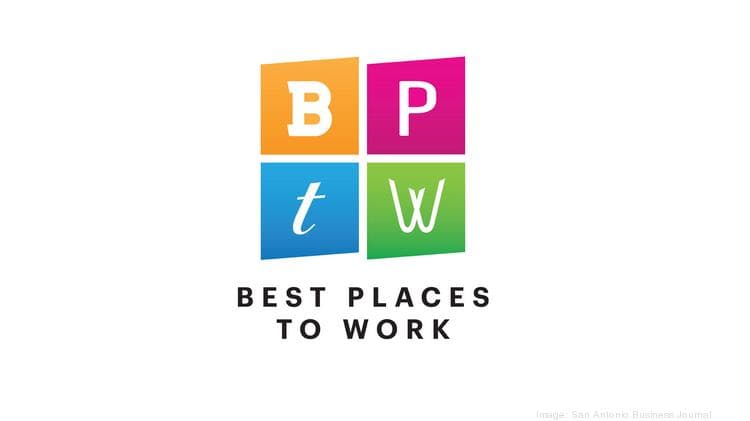As the calendar turns to 2024 it’s tempting for HR leaders to follow the latest trends and adopt buzzworthy strategies but it’s crucial to make sure your priorities are business-led and align seamlessly with your organization’s goals.
“To develop business-led HR strategy, HR must put their favorite HR topics to one side and open up their minds to take a completely fresh perspective,” advises Deborah Wilkes of EnableHR. “How can you successfully create a business-led people strategy for 2024? Engaging business leaders from start to finish is key.”
HR Needs to Speak the Language of the Boardroom
It’s important to remember that HR departments risk losing the support of business leaders if they fail to speak the language of the boardroom – and research shows that those making the big decisions are open to input from HR.
The reality is that the eyes of some stakeholders will glaze over when presented with an array of HR acronyms and new methodologies making it tough to bridge the gap between innovative HR practices and the tangible needs of the business.
“The good news is that 89 percent of CEOs say HR should have a central role in the business, according to new data from Accenture,” reports Forbes.
That Accenture research, however, found that only 29 percent of HR leaders today have both the profile and the right conditions to fulfill that central role in their organization.
Accenture said: “As Cisco’s Chair and CEO Chuck Robbins puts it: “CHROs (Chief Human Resources Officers) have the ability to drive a company’s growth and business outcomes by effectively using people strategy, data insights, and technology to the company’s advantage. When a CHRO is empowered to operate in this way, the result is a culture that benefits both people and profitability.”
Here are eight tactics to help make sure your priorities are business-led in 2024:
- Ask the Right Questions
The cornerstone of any successful HR strategy lies in understanding the business’s unique challenges and goals.
HR leaders must engage in meaningful conversations with business leaders, with Wilkes saying to start with the crucial question, “What keeps you awake at night?”
This opens the door to deeper discussions about the organization’s pain points and aspirations.
Other questions that HR can ask business leaders include:
- What specific skills or talents are we lacking in our workforce that hinder our growth?
- How can HR contribute to enhancing employee engagement and retention?
- Are there any emerging market trends or industry shifts that HR should be prepared for?
- In what ways can HR support the organization’s long-term vision and sustainability goals?
Also, remember the power of “tell me more” as a potent tool.
It not only demonstrates a genuine interest in the concerns of business leaders but also encourages open communication. HR professionals should be avid listeners, seeking to uncover the challenges faced by the organization.
This approach transforms HR from a reactive to a proactive partner in driving business success.
- Build the Relationship: Nurture Long-Term Engagement
Before diving into the creation of an HR strategy, it’s imperative to establish and cultivate long-term relationships with stakeholders.
Rushing into strategy formulation without a solid understanding of the organizational landscape and the unique needs of different departments can lead to misguided initiatives.
Engaging stakeholders in ongoing conversations fosters trust and ensures that HR strategies are not only well-informed but also well-received.
Building relationships takes time, but the benefits are immense. Long-term engagement allows HR to gain insights into the nuances of the organization, understand the perspectives of various stakeholders, and tailor strategies that resonate with the specific challenges faced by different business units.
- Understand the Levers: Decoding Data-Driven Decisions
Data-driven decision-making is not just a buzzword; it’s a fundamental aspect of aligning HR strategies with business goals.
HR must go beyond surface-level understanding and delve deep into the business’s key performance indicators (KPIs) and critical success factors. By comprehending the levers that drive improved results in the organization, HR can develop strategies that directly impact these key areas.
Understanding the levers involves identifying the metrics that matter most to the business. Whether it’s sales growth, customer satisfaction, or operational efficiency, HR strategies should be designed to enhance these specific outcomes.
- It’s All About the “Buy In”!
Securing and maintaining “buy-in” from key business leaders and stakeholders is pivotal for the success of HR priorities.
To achieve this, HR leaders must communicate the strategic value of their initiatives in a language that resonates with the broader organizational goals.
Ways to win and retain buy-in include:
- Clearly articulating how HR strategies align with and contribute to overall business success.
- Involving key stakeholders in the strategy development process, ensuring their perspectives are considered.
- Demonstrating the positive impact of HR initiatives through tangible results and outcomes.
- Creating a feedback loop to address concerns and adapt strategies based on evolving business needs.
- Start with the End Game: Crafting Strategies with Purpose
The principle of starting with the end in mind emphasizes the importance of aligning HR strategies with the desired organizational outcomes.
Instead of crafting strategies in isolation, HR leaders should begin by defining what success looks like for the organization and then work backward to create strategies that directly contribute to those goals.
This approach ensures that HR strategies are purposeful and directly linked to the overarching objectives of the organization.
- Connect HR Activities to Business Results
The incorporation of measurements and milestones into HR strategies is crucial for several reasons. It provides a framework for evaluating the success of HR initiatives and demonstrating their impact on business results.
By establishing clear metrics, HR can track progress, identify areas for improvement, and showcase the tangible value it brings to the organization.
Measurements and milestones can serve as a bridge between HR activities and business outcomes.
They also provide a basis for accountability, helping HR leaders and stakeholders understand the direct correlation between HR efforts and the achievement of organizational goals.
- Prioritize: Decide What Can and Cannot be Accomplished
While no one likes to say “no” to requests, acknowledging the limitations of budget, time, and staffing constraints is essential for an effective HR strategy.
Rather than attempting to fulfill all demands, HR must prioritize initiatives that align most closely with the critical needs of the business.
This requires a strategic assessment of what must be achieved for the organization to succeed.
Strategic prioritization also guards against spreading resources too thin, allowing HR to focus its efforts on the areas that truly matter and deliver the greatest value to the organization.
- Track and Celebrate HR Achievements
While measurements and milestones quantify the impact of HR initiatives, tracking and celebrating achievements serve the vital role of showcasing the value that HR brings to the organization.
Recognizing and publicizing successful HR endeavors fosters a positive organizational culture and reinforces the strategic importance of HR.
These celebrations will not only boost morale within the HR team but also communicate to the broader organization that HR is a proactive and integral contributor to success.
Ultimately, this positive reinforcement helps build a culture of appreciation for HR initiatives, strengthening the alignment between HR strategies and business goals.
2024 may be the perfect time for HR to move beyond the confines of traditional methodologies and embrace a dynamic, business-centric mindset.
Not sure where to start? Reach out to Employer Flexible today for help in making sure your HR priorities next year are business-led.





